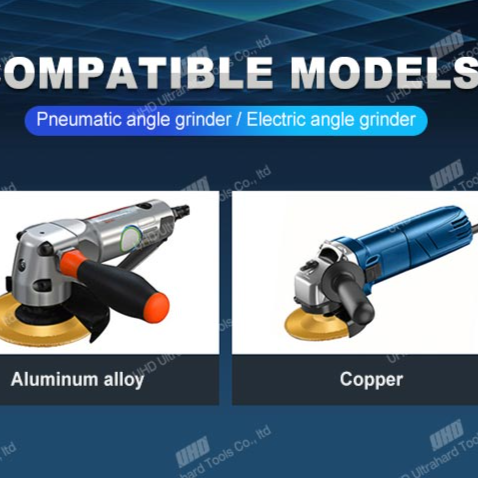.png?x-oss-process=image/resize,h_1000,m_lfit/format,webp)
In the realm of precision grinding, the choice of tools is pivotal. The industry now faces new challenges in tool performance, such as dealing with high - hardness materials and long - cycle operations. High - hardness materials like ceramics and some special alloys require tools with excellent wear resistance and strength. Long - cycle operations demand tools that can maintain stable performance over extended periods without frequent replacements.
.png)
Brazing technology brings significant advantages to diamond tools. First, in terms of bond strength, the brazing process forms a strong chemical bond between the diamond and the substrate. This bond can withstand high - intensity forces during grinding, reducing the risk of diamond shedding. For example, in high - speed grinding operations, the brazed bond ensures that the diamond particles remain firmly in place, maintaining the tool's cutting ability.
Second, brazed diamond tools have excellent thermal stability. During the grinding process, a large amount of heat is generated. Traditional bonding methods may lose their effectiveness due to high temperatures, but brazed tools can maintain their structure and performance. They can operate at high temperatures for a long time without significant degradation, which is crucial for long - cycle grinding operations.
Finally, the wear resistance of brazed diamond tools is outstanding. The unique bonding structure and the high - quality materials used in brazing make the tools highly resistant to wear. This means that they can be used for a longer time before needing replacement, reducing the overall cost of grinding operations.
Compared with traditional bonding methods such as electroplating and sintering, brazing technology has several distinct advantages. Electroplating has relatively low bond strength. The diamond particles are only mechanically attached to the substrate, and they are prone to falling off during high - intensity grinding. Sintering may have issues with heat dissipation and can cause damage to the diamond particles due to high - temperature sintering processes.
In terms of safety, brazed tools are more reliable. Since the diamond particles are firmly bonded, there is less risk of them flying off during operation, which can cause safety hazards. In addition, the longer service life of brazed tools means fewer tool replacements, reducing the downtime and potential safety risks associated with tool changes.
| Bonding Method | Bond Strength | Thermal Stability | Wear Resistance | Service Life | Safety |
|---|---|---|---|---|---|
| Electroplating | Low | Poor | Low | Short | Low |
| Sintering | Medium | Medium | Medium | Medium | Medium |
| Brazing | High | Excellent | High | Long | High |

In different application scenarios, the choice of tool diameter is crucial. For example, in grey iron grinding, smaller diameter tools (around 100mm) are more suitable for detailed and precise grinding, while larger diameter tools (150 - 180mm) can be used for rough grinding and large - area processing. In stainless - steel grinding, the choice also depends on the specific requirements of the workpiece. For high - precision parts, smaller diameter tools are preferred, while for large - scale stainless - steel workpieces, larger diameter tools can improve the grinding efficiency.
In ceramic grinding, due to the high hardness of ceramics, tools with appropriate diameters are needed to ensure the grinding quality. Smaller diameter tools can be used for fine - tuning and shaping, while larger diameter tools can be used for initial rough grinding.
When making a decision on selecting a diamond tool, users should consider several factors. The aperture of the tool is an important consideration. Different grinding machines may have different requirements for the tool aperture. The edge thickness also affects the tool's performance. Thicker edges are more suitable for rough grinding, while thinner edges are better for fine grinding.
Whether the workpiece is a flat surface or a curved surface also matters. For flat - surface grinding, tools with a flat structure are more appropriate, while for curved - surface grinding, tools with a special shape or flexibility may be needed.
Henan Youde Superhard Tools adheres to the product philosophy of "durability is the key". Their "Brazed Diamond Grinding 100" tools have been widely recognized by global customers. These tools can provide efficient and stable grinding performance, significantly extending the tool change cycle and reducing downtime losses. They have been tested in various high - intensity grinding scenarios and have proven to be reliable and cost - effective.
If you are looking for high - quality diamond tools for precision grinding, don't miss out on Henan Youde Superhard Tools. Click here to learn more about their products and find the perfect solution for your grinding needs!

